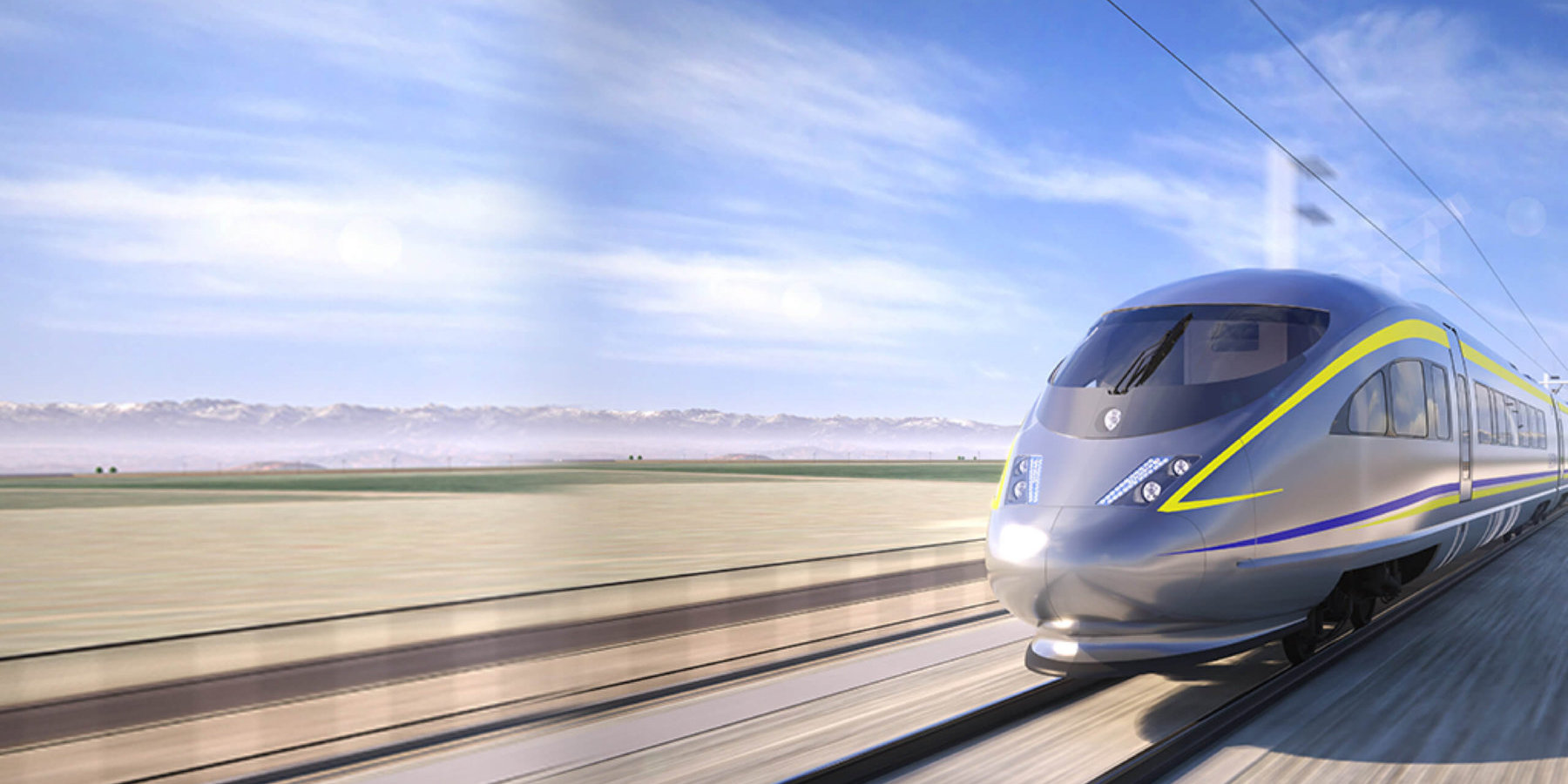High-Speed Rail
High-speed rail is a transformative transportation solution that offers a sustainable alternative to traditional rail and road travel. By reducing travel times and greenhouse gas emissions, high-speed rail can play a significant role in mitigating climate change.

Image from the California High-Speed Rail Authority
View open jobs in this Solution
Example Companies
- Central Japan Railway Company - Operates the Tokaido Shinkansen, a high-speed rail line in Japan.
- Virgin Hyperloop - Develops hyperloop technology for high-speed transportation.
- Siemens Mobility - Provides high-speed rail solutions and technologies.
- Alstom - Specializes in sustainable and smart mobility solutions, including high-speed trains.
- California High-Speed Rail Authority - Oversees the development of high-speed rail in California.
Overview
High-speed rail has made significant progress in recent years, with advancements in technologies such as magnetic levitation and linear motors. These innovations enable trains to travel at high speeds with minimal friction, reducing greenhouse gas emissions. Companies like Central Japan Railway Company and Virgin Hyperloop are at the forefront of this solution.
Progress Made
Significant advancements have been made in high-speed rail technologies:
- High-Speed Maglev Trains: Use magnets to levitate off the tracks, reducing friction and increasing efficiency.
- Hyperloop: A new transportation system using low-pressure tubes to send passengers and cargo at high speeds.
- Energy-Efficient Locomotives: New locomotives are more energy-efficient than traditional diesel engines.
Solutions by Sector
Passenger Rail
- High-Speed Trains: Trains designed for high-speed travel between cities.
- Maglev Trains: Trains that use magnetic levitation to eliminate friction.
- Hyperloop Systems: High-speed transportation systems using low-pressure tubes.
Case Studies:
- Central Japan Railway Company, Japan: Operates the Tokaido Shinkansen, one of the world's busiest high-speed rail lines (Central Japan Railway Company).
- Virgin Hyperloop, USA: Developing hyperloop technology for high-speed transportation (Virgin Hyperloop).
- Siemens Mobility, Germany: Provides high-speed rail solutions and technologies (Siemens Mobility).
Freight Rail
- High-Speed Freight Trains: Trains designed for fast and efficient freight transport.
- Automated Freight Systems: Using automation to enhance the efficiency of freight transport.
- Sustainable Freight Solutions: Implementing energy-efficient technologies in freight rail.
Case Studies:
- DB Cargo, Germany: Operates high-speed freight trains for efficient cargo transport (DB Cargo).
- Union Pacific, USA: Implements automated systems to enhance freight efficiency (Union Pacific).
- Alstom, Global: Develops sustainable freight solutions for rail transport (Alstom).
Infrastructure and Integration
- Rail Network Expansion: Developing new high-speed rail lines and expanding existing networks.
- Station Modernization: Upgrading stations to accommodate high-speed rail.
- Integration with Other Modes: Ensuring seamless connections with other transportation modes.
Case Studies:
- California High-Speed Rail Authority, USA: Oversees the development of high-speed rail in California (California High-Speed Rail Authority).
- Texas Central Railway, USA: Developing a high-speed rail line between Dallas and Houston (Texas Central Railway).
- Eurostar, Europe: Integrates high-speed rail with other transportation modes across Europe (Eurostar).
Lessons Learned
- Infrastructure Investment: Significant investment in infrastructure, including tracks, stations, and power systems, is essential.
- Political Support: Strong political support is crucial for the success of high-speed rail projects.
- Public Support: Gaining public support through education and engagement is vital.
- Private Sector Involvement: Private sector involvement provides necessary capital and operational expertise.
- Careful Planning and Execution: High-speed rail projects require meticulous planning and execution to succeed.
Challenges Ahead
- High Cost: Infrastructure development and maintenance are expensive.
- Right-of-Way: Obtaining dedicated right-of-way in densely populated areas can be challenging.
- Operational Challenges: High-speed operations require specialized equipment and trained personnel.
- Service Disruptions: Potential disruptions due to weather or other factors.
- Public Resistance: Overcoming public resistance to the construction of high-speed rail lines.
Best Path Forward
- Research and Development: Invest in R&D to improve high-speed rail technologies.
- Political and Public Support: Work to gain political and public support for high-speed rail projects.
- Private Sector Collaboration: Engage with private companies to promote the adoption of high-speed rail.
- Infrastructure Investment: Continue investing in infrastructure to support high-speed rail.
- Monitoring and Evaluation: Monitor progress to ensure the technology is effective and make adjustments as needed.
Image credit: California High-Speed Rail Authority